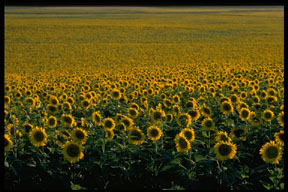Click on image for full size
Courtesy of Corel Photography
Related links:
Nature's Cleaner-Uppers
News story originally written on March 3, 2000
Sadly, humans have a habit of making messes in our environment. Oil spills, toxic chemicals and other harmful materials ruin otherwise healthy land. Normally it takes a lot of time and money for cleanup, but scientists say help is on the way.
Biologists have discovered that some species of plants will clean up these wastes. Gardeners everywhere hate crabgrass more than any other plant, but it happens to be a great fighter when it comes to hydrocarbons. The "weed" attracts microorganisms which eat the contaminants. Other plants, such as poplar trees, actually absorb the materials into their roots, limbs and leaves.
It may take years before an area is cleaned up, but the cost is much less than the typical clean up process. Transporting the chemicals out of the area takes time and money, and doesn't really solve the problem because the chemicals are dumped somewhere else. The plants, however, can be removed and burned once the chemicals are absorbed.
Scientists say much more research is needed before this procedure can be used all the time. They need to make sure the organisms that eat the chemicals don't end up spreading the chemicals around instead of eliminating them. But if this process works, we will have a great weapon against land contamination.















